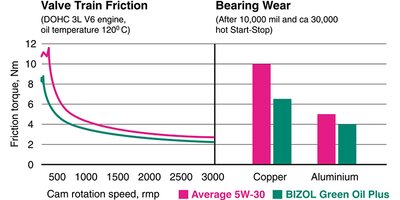WHEN SHOULD I CHANGE AUTOMATIC TRANSMISSION OIL?
Transmission fluid change – When is it important?
Especially older vehicles with a high mileage often need a change of the outdated transmission fluid. The reliable lubricating film protection is only effective for a limited time and deteriorates over the years. And it is of central importance for the long-term functional safety of the transmission components.
Jerky gear changes – signs of leaking fluid protection
Even though many manufacturers promise lifelong lubrication protection with a single automatic transmission fluid filling, they do not take the mileage of the transmission into account. This makes them assume an operating life of up to twelve years. However, drivers feel the declining quality of automatic transmission fluids earlier. Generally, the automobilist notices jerky gear changes at cold temperatures, insufficient power transmission, and increased fuel consumption.
Tasks of a good automatic transmission fluid
In order for the gear oil to ensure a long material life of the components, the loaded tooth flanks of the gear wheels must be protected by a thin lubricating film that withstands the occurring forces. It is also crucial to dissipate the friction heat to avoid increased wear.
Reasons for a gear fluid change
Influencing factors leading to premature ageing are high mechanical abrasion of gears and clutch plates and very high thermal loads. Unfavourable driving habits also reduce lubrication properties in the long term, accelerating the ageing process of the fluid and gearbox.
Simplification of grades – One fluid, many areas of application
Following the customer’s request for re-introduction, BIZOL offers the automatic transmission fluid BIZOL Protect ATF DIII+ in a revised composition back in the product range. The synthetic base fluid has been formulated with newer additives, showing excellent driving properties at very cold and very hot temperatures and fast speeds. It also withstands heavy loads. This universal automatic transmission fluid can show its advantages especially in passenger cars, trucks, buses, and special vehicles as well as in hydraulic converters, hydraulic power steering systems and hydraulic clutches.

You might also like

Prof. Dr. Boris Zhmud, Head of R&D, BIZOL Germany

Within the realm of automotive care, few substances are as vital as motor oil, in ensuring the seamless operation of a vehicle's propelling device. It serves as the lifeblood of a motor, ensuring that the intricate machinery operates efficiently and without unnecessary friction. The functions of motor lubricant substance extend far beyond just lubrication, encompassing a range of critical tasks that contribute to the longevity and performance of a propelling mechanism. In this article, we’ll delve into the multifaceted functions of motor oil and explore how it plays a pivotal role in maintaining the health of automotive powerhouses.

The modern marvel of an internal combustion motor powers our vehicles, providing the strength and reliability we rely on for daily transportation. However, just like anything else subjected to constant use, motorized units experience wear and tear over time. Component deterioration can significantly impact performance and longevity. In this article, we will delve into the intricacies of engine wear meaning, explore the various causes behind it, provide actionable tips to reduce and prevent it. Furthermore, we will look at how specialized engine oils, such as BIZOL, play a crucial role in safeguarding your engine’s health. Let’s begin by understanding what engine wear is and the factors that contribute to it.

